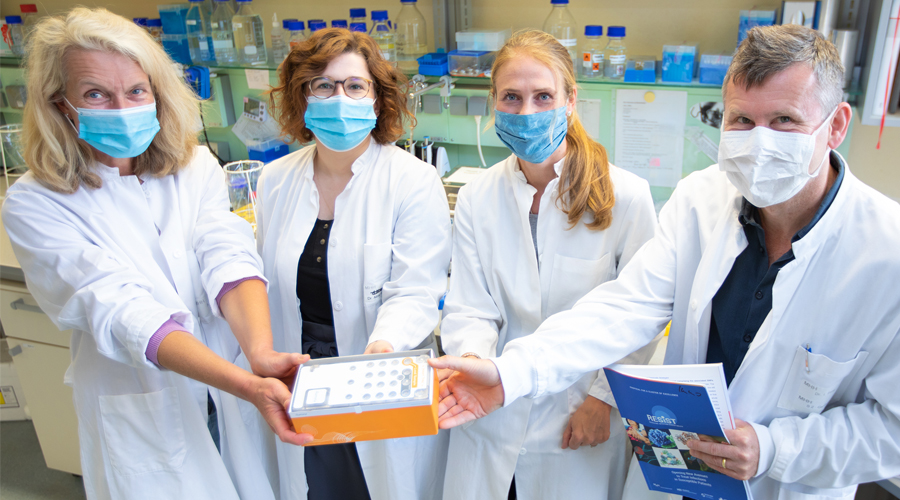Protection from the beginning: RESIST research team found out that certain T cells expand immediately after birth
They play an important role in the recognition of “danger” from invading pathogens and spread quickly and intensively during acute infections – we are talking about certain immune cells, which belong to the so-called gamma-delta T cells. These specialised white blood cells, known as Vγ9Vδ2 T highly functional. Until now, it was assumed that they multiply slowly over the course of a lifetime, depending on bacteria and certain environmental factors, and that they continue with development of their necessary functions as defense cells.
However, a RESIST team has now discovered that these cells proliferate expansively in premature babies directly after birth and remain until childhood. Another research group has been able to gain similar findings during investigation of mature babies. “We assume that these gamma-delta T cells play an important role in early childhood immune defense and homeostasis and may even persist for a lifetime,” says Professor Dr. Sarina Ravens. Together with Dr. Alina Fichtner, Professor Dr. Dorothee Viemann and Professor Dr. Immo Prinz, she has published these findings in the scientific journal “Proceedings of the National Academy of Sciences of the United States of America” (PNAS).
The RESIST scientists work in the Institute of Immunology as well as in the Clinic for Pediatric Pneumology, Allergology and Neonatology at Hannover Medical School (MHH). The blood samples required for this work come from cohorts led by Professor Viemann – among others from the PRIMAL study, which focuses on the immune development of premature babies. Now the research team wants to investigate the exact role of these gamma-delta T cells in the immune defense of newborns and children. The long-term goal is to develop better prevention, diagnosis and therapy options based on a more comprehensive understanding of the formation and regulation of the immune system of newborns.
Gamma-delta T-cells have characteristics of the innate immune system with its rapid, beneficial response to many foreign substances and are produced in the fetal thymus around the eighth week of pregnancy. But they also have properties of the acquired immune system, which with its slower, very specific immune response leads to a long-lasting memory against subsequent challenges such as infections. They thus form a bridge between the innate and the acquired immune system. They are named after their T cell receptors – the protein complex on their surface that is responsible for the recognition of antigens. In order to investigate how these cells react to microbial exposure in newborns, infants and toddlers, the research team used the method next generation T cell receptor sequencing.
The original publication “Microbial exposure drives polyclonal expansion of innate gd T cells immediately after birth” can be found on the Internet under the link https://doi.org/10.1073/pnas.1922588117
The photo shows (from the left): Professor Viemann, Dr. Fichtner, Professor Ravens and Professor Prinz at the MHH Institute of Immunology with reagents for the sequencing of T-cell receptors

